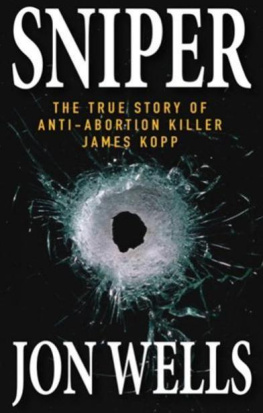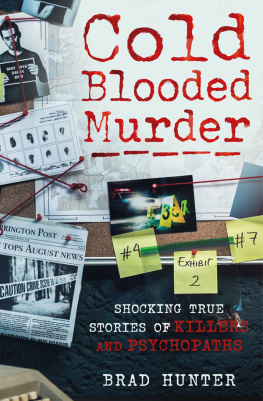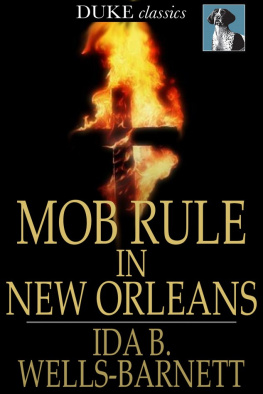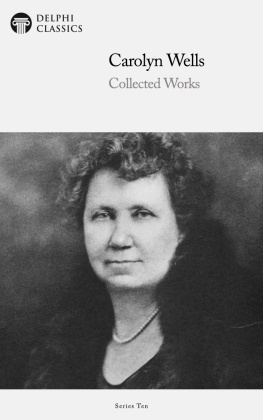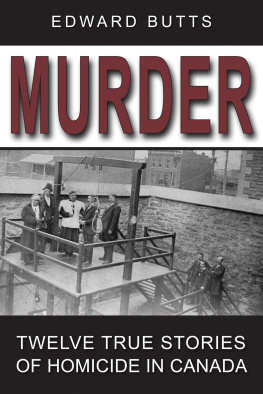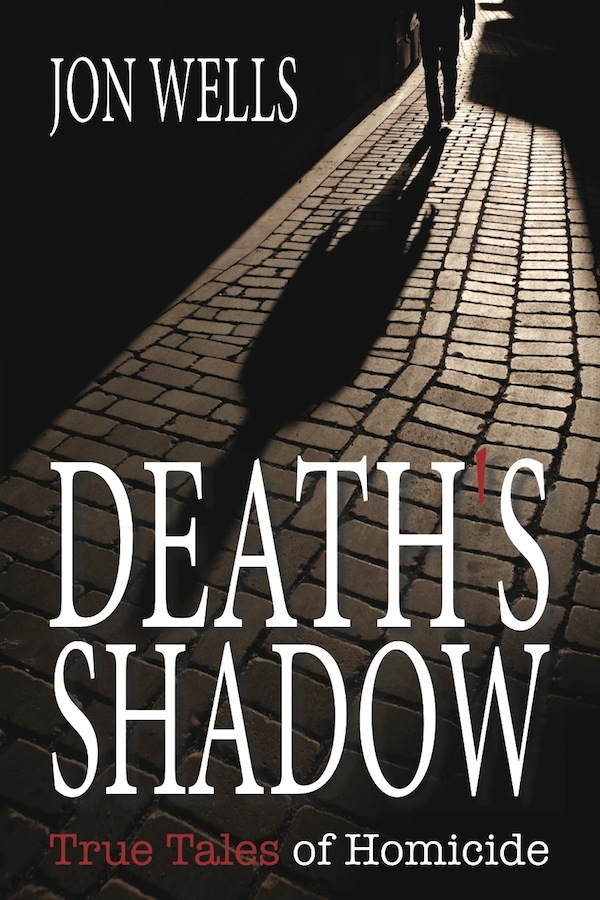1
Paint on the Walls
Fathers Day
Sunday, June 18, 2000
Central Police Station
Hamilton, Ontario
The tape rolling, video recorder light blinking, the detective made note of the time: 9:42 p.m. Four hours earlier the witness had been wandering along King Street East downtown. He had been barefoot, wearing a dirty T-shirt and a diaper. The witness was three years old.
Whats your full name? the detective asked.
Eugene.
Eugene, whats your last name?
Charlisa, the boy said. His mothers name.
Who lives in your house?
Pat, he said. Charlisas boyfriend. Pat got paint all over the walls.
Who else lives with Pat?
Mama.
Could you tell me where Pat is?
My house.
What is Pat doing in your house?
I dunno. Sleeping in Mamas bed.
Can you tell me what happened today?
Door locked.
When the door was locked, where were you?
With my shoes.
What did you do when you found the doors locked?
Open the lock.
Then what happened?
I opened the doors at my house. Pats in my house. Pat. All over over the wall. Paint all over the walls. Mamas wall.
It had been cool earlier that day and it had rained hard. But the sky had cleared by late afternoon when Eugene entered a variety store on King East. He felt sick. And then, moments later, the boy saw the giant police officer.
The call had come over the police radio at 5:30 p.m. Constable Randy Carter had arranged to end his shift early, planning to get home for the Fathers Day barbecue he and his wife were planning with their kids. From what dispatch was telling him, the call found child would not take long. Hed be home in no time. Carter always shook his head at found-child calls. How could a parent be negligent enough to let a kid go missing in the first place? But the half dozen or so such calls he had handled before had all turned out fine: the child reunited with the parent.
He parked his cruiser in front of K&M Variety and went inside. Carter hulking size, head shaved bald, silver goatee saw the child with blond hair in a full diaper that looked ready to burst. A man behind the counter said the boy had thrown up on the floor. Carter greeted the boy, who said nothing. Then he took him outside for air, just as two women came running up the sidewalk. They said the boys name was Eugene.
I know where he lives, one of them said.
Take me there.
They led Carter to an apartment building nearby, went around back, and pointed to the unit on the second floor where the boy lived with his mother. The building was a low rise, the second floor not very high up. Carter climbed the eight metal steps on the outside of the building and knocked at the rear door of unit C. No response. He knocked again, harder.
Police!
There was no answer. This was the kind of thing that really grated on him: parents who let their child go missing and then, what? Head to work? Take a nap? He thumped his big fist on the door again, this time with the intent to force it open. The door opened slightly but was stuck on something; it went no further. He moved back down the stairs. Another tenant showed. She said Eugenes mothers name was Charlisa; said there was a key hanging from the front door of her unit. Things were not going as expected. He knew something was wrong. The barbecue was going to be delayed.
Im at 781 King Street East, Carter said into his radio. Not getting any response from apartment C. Can you send backup?
He wrote down information from the two women who knew the boy, and left him in their care. Eugene needed clean clothes, a drink, and his temperature taken. Carter moved around to the front of the building, met another officer, and entered.
Were going in, I need 10-3, he said into his radio, meaning radio silence no officers speaking on air unless absolutely necessary, keeping the channel clear so he could call for more help. Radio silence was important for another reason: if there was someone inside the premises with bad intentions, he didnt want to advertise that he was coming.
Carter, senses on fire, muscles rigid, expecting to discover something bad, opened the front door to unit C, the keys still dangling from the front lock. He moved through the messy apartment. One of the rooms had art supplies in it, a couple of easels, brushes. He entered the main bedroom. And now he knew. He had gotten hardened on the job. He had been to nasty calls in the past. But nothing like this.
Paint all over the walls.
Send an ambulance, Carter said. Make that two.
Eugene, the little blond-haired boy, the first and perhaps only witness at the crime scene, met the detective for questioning later that evening. The detective spent time observing the boy chatting off camera at first. Build rapport, talk about colours, the alphabet, toys, the detective decided. Eugene had good language skills. The detective would start with general questions, then focus.
Eugene, the detective asked, who put you to bed last night?
Mama. Mamas gone.
What happened when you woke up?
Mama pillow wet. Paint all on Mama pillow.
What happened when you woke up?
Pats van gone. Man ride it.
Did you look at this man?
Van gone.
Tell me what happened last night.
I was sick.
Did you wake up?
Yeah. Mama gone.
Did you see anyone hurt your mom or Pat?
Mom and Pat. They are gone. Mom sleeping, Pat sleeping.
That night forensic identification detectives moved gingerly through the living room of the apartment, the room lit only by the dull glow of the solitary light on the ceiling. Dont touch anything, not yet . Hank Thorne was new in ident branch; his partner, Ross Wood, was a veteran at the grisly business. They noted that the door to the balcony, which faced King Street, was wide open. On the balcony, an open purse on a couch. A pair of mens sandals.
Directly beside the living room was the front door to the unit; a key chain hung from the lock. About five paces from the living room, the first room on the left was a tiny bathroom; the light had been left on. Across the hall, on the right, was a childs bedroom: Eugenes room. The overhead light was on, and also the table lamp; the room was messy, toys and clothes all over the floor. The closet door was open.
Three more paces down the narrow hallway, Thorne was writing observations: Blood noticed on the west wall of the hallway by the light switch, and also on the heating radiator. The door to a second bedroom was open. Blood on the door frame. Small bedroom, two bodies on the bed, unclothed, male and female. Socks the only clothing on the male; also wearing a gold watch. Fabric anklet on the female; one-inch bruise on the left elbow. Pillow, sheets wet with blood.
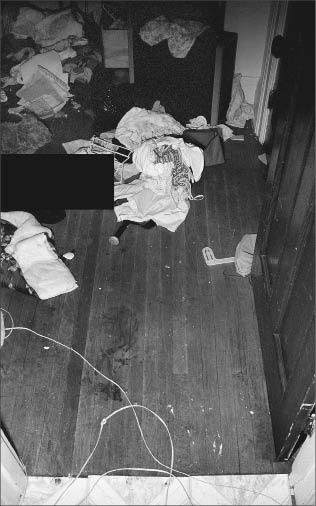
Ident officers discovered the murder weapon a baseball bat under clothes on the floor of Charlisas apartment.
Hamilton Police Service.
Further along from the bedroom, on the right, was a room with art supplies in it, and then the kitchen. On the kitchen floor sat a bucket of dirty water with a mop. The back door was ajar, still partially open since Randy Carter had tried to enter there. The door had been caught on a chain-link lock, which was why it wouldnt open completely before. The apartment was a disaster, littered with clothes. There was lots of work to do on the crime scene: photograph, videotape, label evidence.
In the bedroom the detectives saw it poking out from underneath clothes strewn on the floor.


